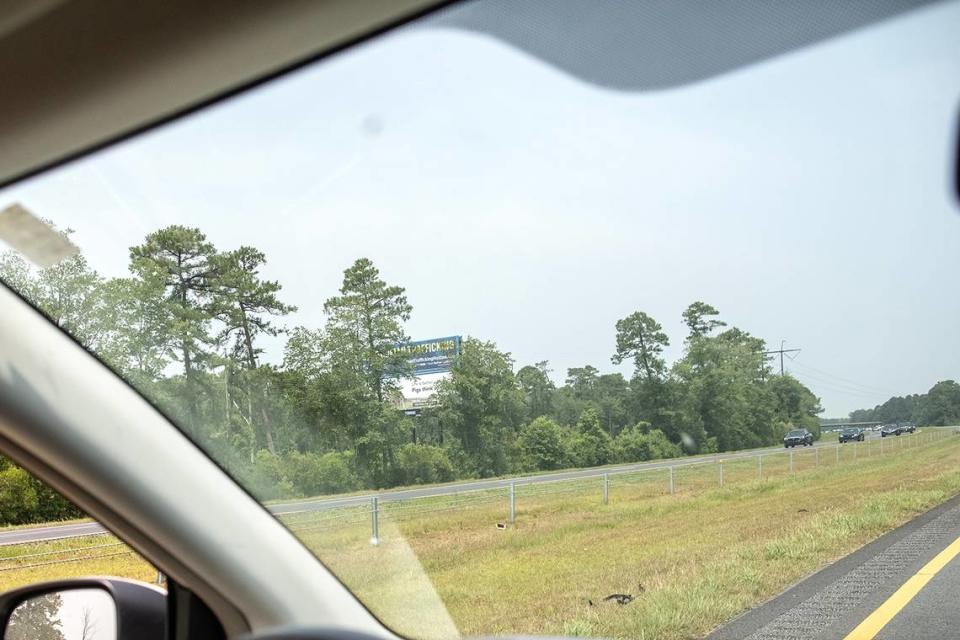Disappearing pigs: NC photographers discover influence of pork industry | Opinion
When two North Carolina photographers came up with an idea for a billboard display, they didn’t expect it would be controversial.
After all, it was just pictures of some pigs — cute, happy-looking pigs, like you’d see on a movie poster for “Charlotte’s Web.”
The photographers, Shannon Johnstone and Jane M. Casteline, are animal lovers who met years ago while volunteering at the Wake County animal shelter. They got to talking one day, and realized that, unlike other animals, pigs rarely receive positive portrayals in the media. Even in the Piggly Wiggly logo, for example, the pig is depicted as a butcher.
“People don’t see pigs as pigs,” Casteline said. “They see them as bacon or caricatures. We want to bring light to the fact that pigs can live wonderful, fulfilling lives if they’re given the opportunity and the environment to do so.”
From that conversation came “Picturing Pigs,” an advocacy effort that aims to portray pigs in a positive light. With a grant from the Culture & Animals Foundation, a nonprofit that supports animal advocacy through artistic expression, Johnstone and Casteline set out to photograph pigs at local animal sanctuaries who were rescued from abusive circumstances. They wanted to convey the message that pigs are sentient beings, and shouldn’t be seen purely as objects for human consumption. Yes, pigs, can be food, but they are also more than that.
In one picture, sister pigs Iris and Brianne are accompanied by the text, “Life is better with friends. Pigs think so too.” The other depicts a pig named Daisy and says, “Enjoying summer? Pigs like sunshine too.”
Johnstone and Casteline wanted to display the photos on billboards along Interstate 40 in Duplin and Sampson counties, which are the top pork-producing counties in the country. Each county is home to nearly two million farmed pigs, according to data from the U.S. Department of Agriculture. That means that pigs in Duplin and Sampson counties vastly outnumber people.
But putting the photos on display was more difficult than they anticipated. When they reached out to billboard companies in April, they met unexpected resistance. The companies were initially cooperative — until they saw what Johnstone and Casteline were hoping to advertise. Four different companies wrote back to say they would be unable to fulfill the contract.
When Johnstone and Casteline asked for an explanation, none was given.
“They were happy to work with us until they saw the images,” Johnstone said. “We asked repeatedly, ‘What is the problem?’ They wouldn’t say anything, other than, ‘We cannot fulfill your contract anymore.’”
One of those billboard companies is owned by the Murphy family, who built a hog farming empire in North Carolina and now contract for Smithfield Foods, the largest pig and pork producer in the world.
Though originally intended to promote animal welfare, Johnstone and Casteline say their project has touched on an even larger theme: the power of the agricultural industry in North Carolina. They are now making a documentary about their experience.
The pork industry is an economic powerhouse in our state, and it wields significant influence. Until it was partially struck down earlier this year, North Carolina had a restrictive “ag-gag” law intended to block animal rights advocates and whistleblowers from exposing the mistreatment of animals on industrial hog farms. Loose state and local laws make it hard for neighboring residents to fight back against pollution and other environmental injustices.
“They are very powerful. They are a part of the fabric of the community, the town, the county, the legislature, and it became very evident very quickly that they were going to be an obstacle to us doing this,” Casteline said.

In their eyes, it brings the whole project full circle.
“Our point was to make the pigs more visible as the animals they are,” Casteline said, “but we’re kind of back to square one with them not being seen.”

